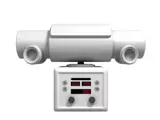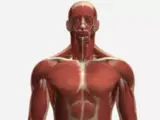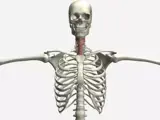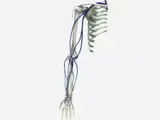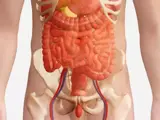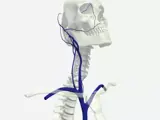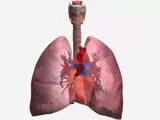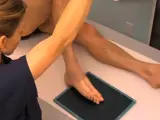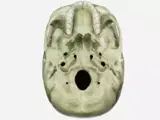Introduction
Step 1 - Beam-restricting devices
Step 1.1 - Scatter radiation
Step 1.1.1 - Kilovoltage (kV)
Step 1.1.2 - Field size
Step 1.1.3 - Patient thickness
Step 1.2 - Control of scatter
Step 1.2.1 - Effect of scatter on image contrast
Step 1.2.2 - Beam restrictors
Step 2 - Radiographic grids
Step 2.1 - Grids
Step 2.1.1 - Grid ratio
Step 2.1.2 - Grid frequency
Step 2.1.3 - Grid strip
Step 2.2 - Grid performance
Step 2.2.1 - Contrast improvement factor (<em>k</em>)
Step 2.2.2 - Bucky factor (B)
Step 2.3 - Grid types
Step 2.4 - Grid problems
Step 2.4.1 - Off-center grid (lateral decentering)
Step 2.4.2 - Off-level grid
Step 2.4.3 - Off-focus grid
Step 2.4.4 - Upside-down grid
Step 2.5 - Grid selection
Step 2.5.1 - Patient dose
Step 2.6 - Air-gap technique
Step 3 - Radiographic exposure
Step 3.1 - Kilovoltage (kV)
Step 3.2 - Milliampere (mA)
Step 3.3 - Exposure time
Step 3.4 - Distance
Step 3.5 - Imaging system characteristics
Step 3.5.1 - Focal-spot size
Step 3.5.2 - Filtration
Step 3.5.3 - High-voltage generation
Step 4 - Image quality
Step 4.1 - Definitions
Step 4.1.1 - Radiographic quality
Step 4.1.2 - Resolution
Step 4.1.3 - Noise
Step 4.1.4 - Speed
Step 4.2 - Film factors
Step 4.2.1 - Characteristic curve
Step 4.2.2 - Optical density (OD)
Step 4.2.3 - Film processing
Step 4.3 - Geometric factors
Step 4.3.1 - Magnification
Step 4.3.2 - Distortion
Step 4.3.3 - Focal spot blur
Step 4.3.4 - Heel effect
Step 4.4 - Subject factors
Step 4.4.1 - Subject contrast
Step 4.4.2 - Motion blur
Step 4.5 - Tools for improving radiographic quality
Step 4.5.1 - Patient position
Step 4.5.2 - Image receptors
Step 4.5.3 - Selection of technique factors
Step 5 - Radiographic technique
Step 5.1 - Patient factors
Step 5.1.1 - Thickness
Step 5.1.2 - Composition
Step 5.1.3 - Pathology
Step 5.2 - Image quality factors
Step 5.2.1 - Optical density (OD)
Step 5.2.2 - Contrast
Step 5.2.3 - Detail
Step 5.2.4 - Distortion
Step 5.3 - Exposure technique factors
Step 5.4 - Automatic exposure control (phototimer)





